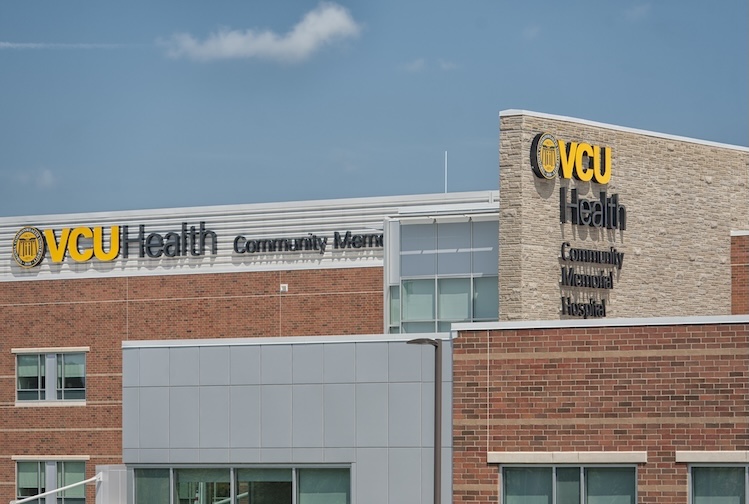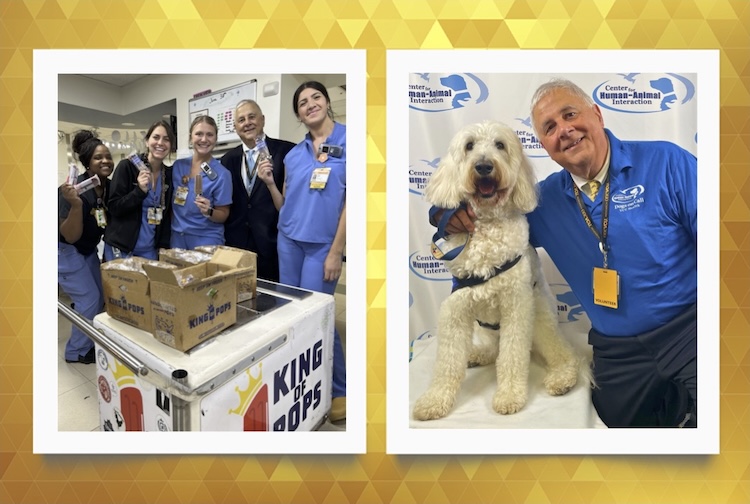May is Better Hearing and Speech Month
May 17, 2021
Hearing and speaking are two things most Americans take for granted. But if you or a loved one suffers from a voice, speech or language disorder, just the effort of communication can be exhausting. Speech-Language Pathologists (SLPs) and Audiologists work together to cover the communication spectrum of health care concerns across the lifespan.
At VCU Health Community Memorial Hospital (VCU Health CMH) SLPs are available to inpatients, outpatients, home health, skilled care and long-term care patients. The audiologist sees outpatients at CMH ENT in the C.A.R.E. Building adjacent to the hospital and also sees inpatients in the Garland Birthing Center.
Join VCU Health CMH for a virtual presentation on audiology and speech language pathology. The talk will take place on Thursday, May 20, from 12:00 - 12:30 p.m. To access, visit www.vcuhealth.org/cmh-core for the Zoom link.
Speech-Language Pathology - Outpatient Rehab
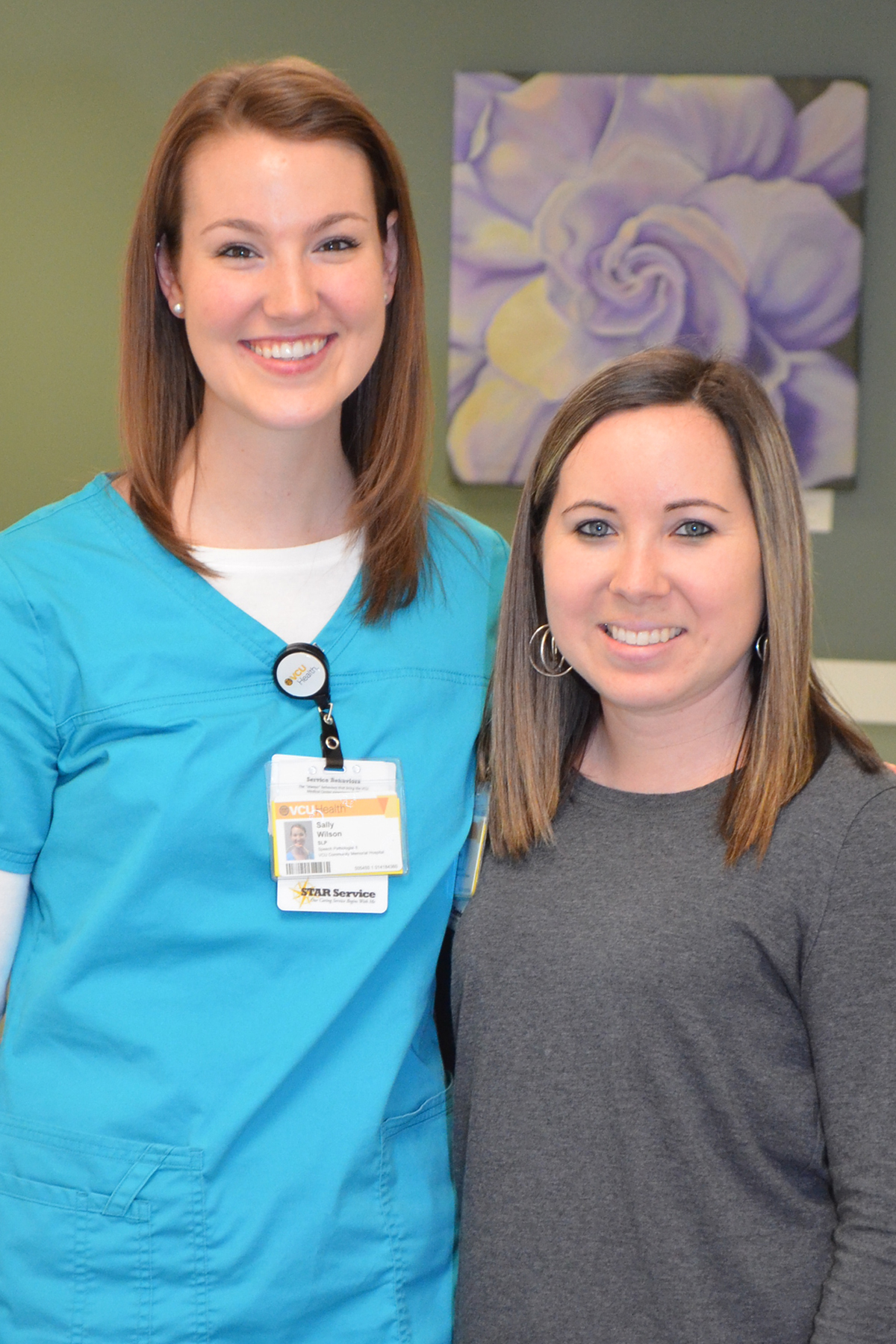 Typical disorders SLPs treat are voice, speech and language, swallowing, cognition (memory, attention), fluency (stuttering), autism and intellectual disabilities. An average evaluation includes background questions, a formal assessment and education and can take a couple visits a week totaling six to eight visits per month, depending on the diagnosis and severity of illness. They also offer augmentative or alternative communication techniques for nonverbal patients and stroke recovery patients.
Typical disorders SLPs treat are voice, speech and language, swallowing, cognition (memory, attention), fluency (stuttering), autism and intellectual disabilities. An average evaluation includes background questions, a formal assessment and education and can take a couple visits a week totaling six to eight visits per month, depending on the diagnosis and severity of illness. They also offer augmentative or alternative communication techniques for nonverbal patients and stroke recovery patients.
SLPs use specialized equipment including neuromuscular electrical stimulation (NMES) and a sound level meter. NMES is utilized for dysphagia (trouble swallowing) and stroke patients with facial drooping to target facial muscle groups. It feels like a tingling sensation and takes a while to get used to it, but it doesn't hurt. Positive outcomes of using neuromuscular electrical stimulation may be improved swallow function and improved facial symmetry. They also use a sound level meter to measure loudness for patients with voice disorders (dysarthria).
Sally Wilson, MS, CCC-SLP, of Blackstone, has worked at CMH Rehab for nearly two years. “I enjoy the variety of working with people across all ages and appreciate getting to know my patients on a deeper level,” she said.
Amy Wilkins, MS, CCC-SLP, lives in Nelson and has worked at VCU Health CMH for more than three years. “I love being the one to help someone do something for the first time in their life, or seeing an adult do something for the first time after suffering a stroke,” she said.
Challenges SLPs encounter in rehab are getting the insurance companies to cover services their patients need. More and more frequently they are having to fight to prove the therapy patients need and they work as a team with physicians, neurologists, pulmonologists and pediatricians to get insurance authorizations.
The pandemic brings additional challenges. Masks make it difficult to understand tactile cues and visuals. Exercises require a verbal explanation and written follow-up to make sure they are understood. Teletherapy takes some creative navigation for insurance and Zoom is not appropriate for all conditions.
Outpatient rehab sees children as young as two brought in for developmental/nonverbal challenges. CDC.gov/ActEarly has developmental milestones by age so you can check to see what your child should be accomplishing compared to most kids the same age.
“Seeking services early is so important. 'Wait and see' may not be the best plan if your child is not trying to use simple, single words, follow simple directions, or respond to his/her name by age 1. The sooner you bring your child in for help, the better we are able to make an impact on their learning,” Sally explained.
Speech-Language Pathology - Acute Care and Home Health
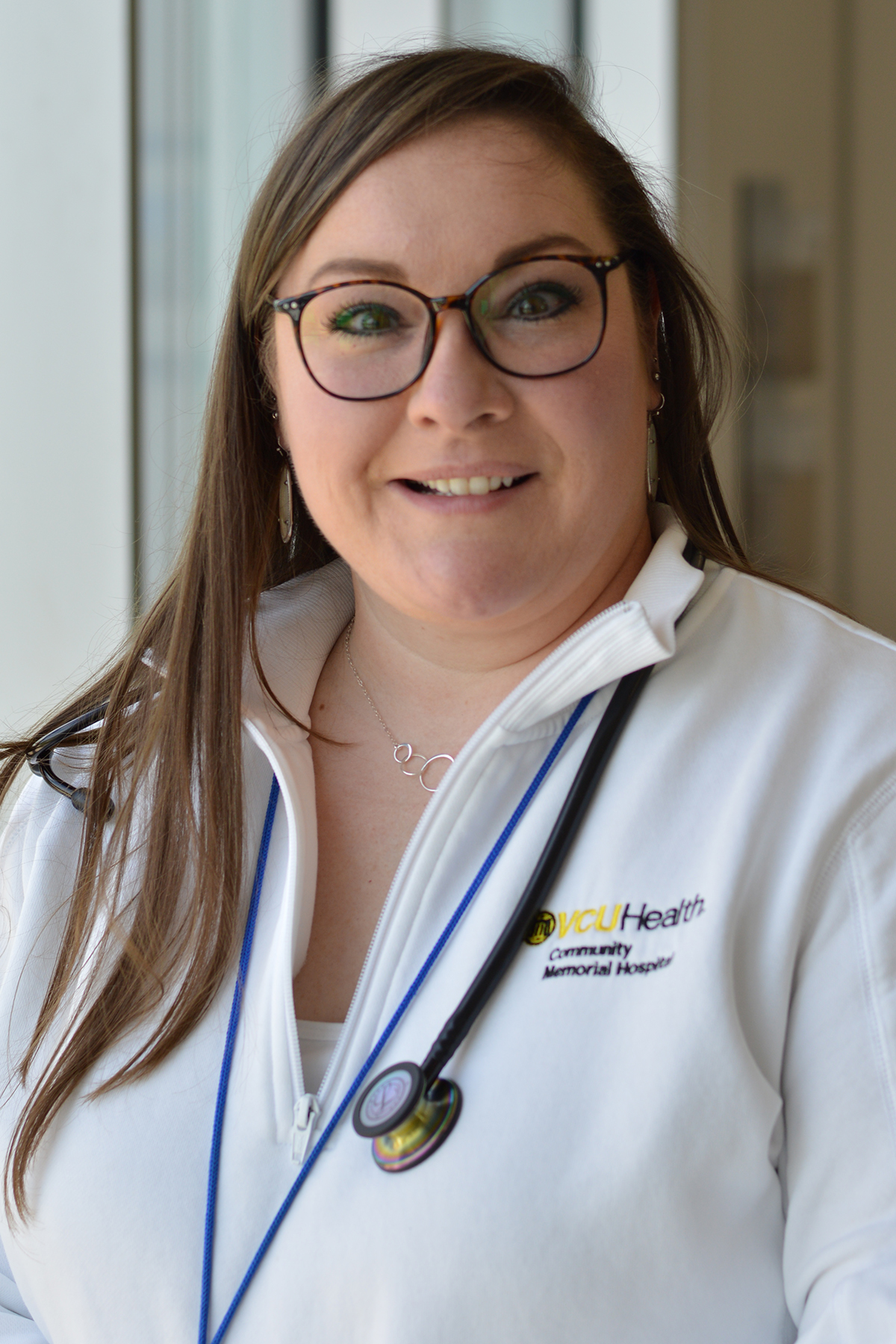 Lesley Horne, CCC-SLPD, of Clarksville, has worked in Acute Care and Home Health for 18 years. She is passionate about education and helped orient Sally and Amy when they first came on board. She works with adults on cognition issues from strokes, brain cancer and traumatic brain injuries; and swallowing disorders like dysphagia.
Lesley Horne, CCC-SLPD, of Clarksville, has worked in Acute Care and Home Health for 18 years. She is passionate about education and helped orient Sally and Amy when they first came on board. She works with adults on cognition issues from strokes, brain cancer and traumatic brain injuries; and swallowing disorders like dysphagia.
“I love being able to connect with my patients on a personal level, she said. “I always try to find out about their hobbies, families and pets to get their mind off their health and make our interactions more personable.”
An important part of Lesley's job is making sure her patients can swallow safely. She uses instruments to diagnose and test swallow function and can help with swallow rehabilitation.
The pandemic makes everything more difficult; referral patterns are different, there's a disruption in people accessing care and some therapy strategies have to be modified.
“At first there was a lot of uncertainty, but once we learned how the virus spreads, we were able to take confidence in our personal protective equipment and make necessary adjustments to keep our patients and us safe,” Lesley explained.
Speech-Language Pathology - Skilled Care and Long-Term Care
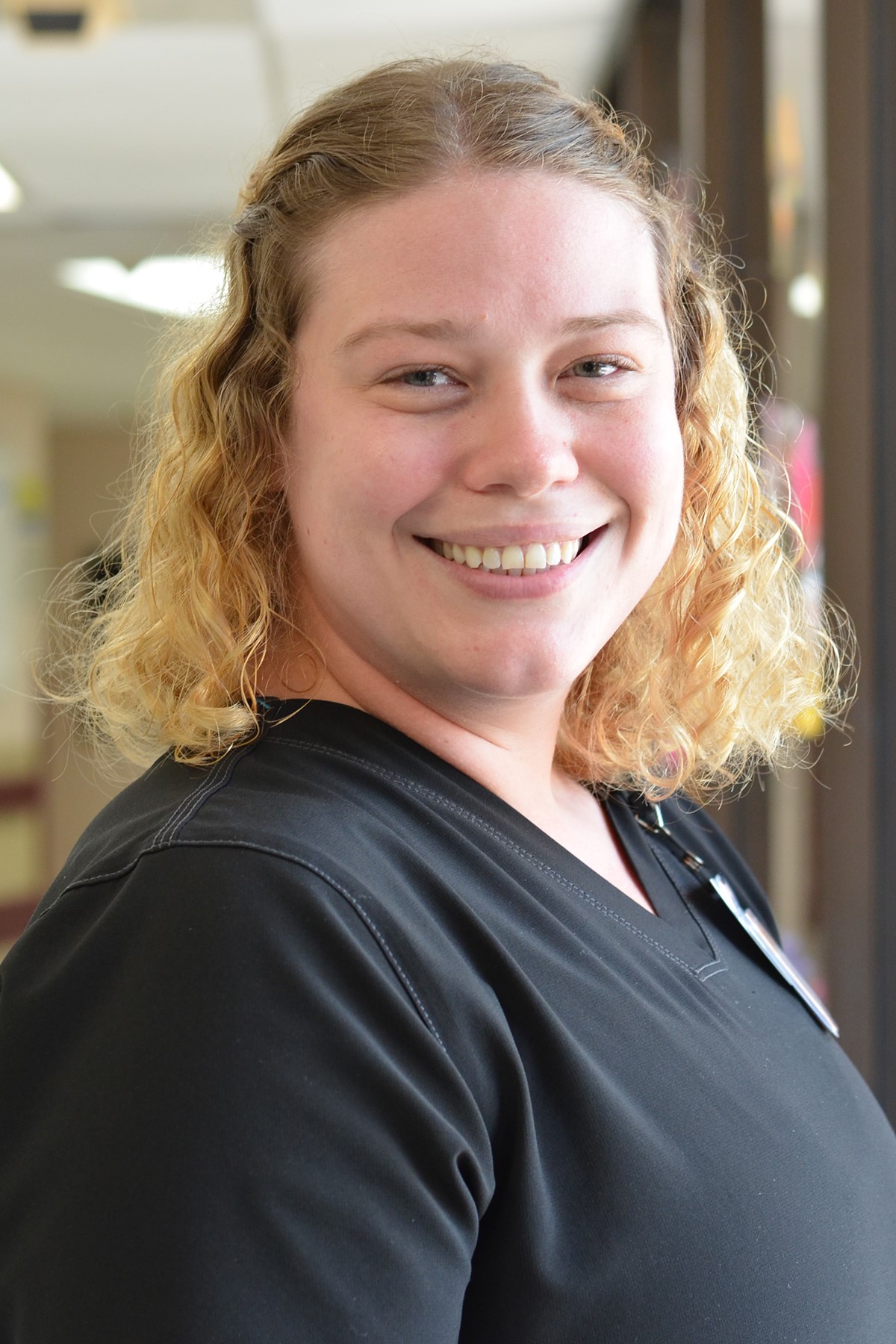 M. Allyson Eades, MS, CCC-SLP, of Bracey, has five years of experience, the last two of which have been at The Hundley Center, the long-term care and skilled nursing facility in South Hill. She mainly focuses on cognitive disorders. A typical evaluation includes testing recall, word recognition, ability to follow commands and swallowing.
M. Allyson Eades, MS, CCC-SLP, of Bracey, has five years of experience, the last two of which have been at The Hundley Center, the long-term care and skilled nursing facility in South Hill. She mainly focuses on cognitive disorders. A typical evaluation includes testing recall, word recognition, ability to follow commands and swallowing.
“When people think of speech therapy, a lot of times they don't think of swallowing,” Allyson said. “We observe how our residents chew, swallow and take medications to see where they need help.”
In a hospital setting, the goal of speech therapy is to get patients to a level where they are safe enough to be discharged. In a long-term care setting, the goal is to get the residents to return to prior level of function and quality of life. They use workbooks and exercises to help improve function.
One of Allyson's favorite parts of her job is getting a patient on a feeding tube back to a full, normal diet, which she has done a handful of times during her career.
Audiology
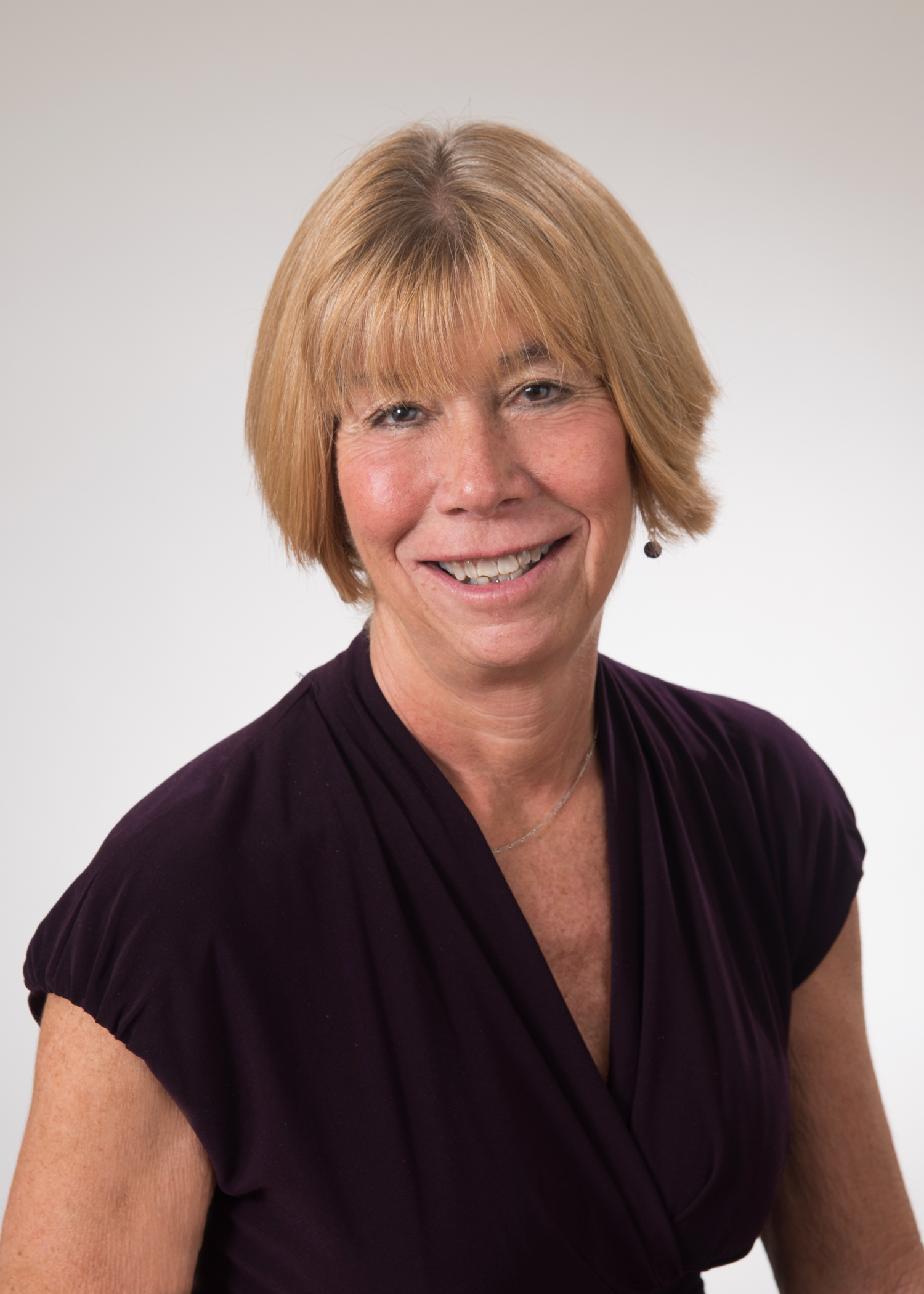 Lynnette Reville, MA, CCC-A, of South Hill, has been an audiologist at CMH ENT for five years. She sees newborns through the lifespan to seniors.
Lynnette Reville, MA, CCC-A, of South Hill, has been an audiologist at CMH ENT for five years. She sees newborns through the lifespan to seniors.
“My favorite part of my job is to help someone experiencing hearing loss finally hear again and seeing that big smile on his or her face,” Lynnette said.
Lynnette treats disorders of the middle ear in children. Sometimes their eustachian tubes are flattened before their heads have a chance to grow, which is why so many kids have middle ear problems. She herself had to have tubes installed nine times. She knew by age seven she wanted to be an audiologist.
In a typical first hearing loss consultation for adults, she checks to make sure ear wax is not a problem, then she asks about hobbies and work to see what loud exposure patients have had repeatedly during their lives. Then she uses a tympanometry instrument to measure middle ear pressure.
She has a sound booth in her office to test pure tones and how the air and bone conduct sound. An Otoacoustic Emissions test measures echoes from the inner hair cells of the hearing nerve. Auditory Brainstem Response measures electrical brain activity relative to sound and time.
The way the brain interprets sound goes through several processes. It is a mechanical process when sound waves reach the ear drum and it moves three bones. The process turns hydraulic with impinging inner ear fluid. It becomes chemical when the excited hair cells affect the nerve endings and finally electrical when the synapses go to the brain.
Hearing aids are a lot more complicated than getting glasses. People expect them to work better in every situation and there are many factors that come into play. Differing levels of sounds, background noises and pitches make it difficult for hearing aids to adjust. Hearing exams usually test 250 hertz to 8,000 hertz. The more bandwidth hearing aids have the better word recognition and understanding will be. Most hearing aids start around $1,800 and go up from there. Technology has come a long way. Some hearing aids will notify a predetermined smart device if someone has fallen.
For More Information
Make an appointment with an SLP in outpatient rehab at (434) 447-0895 or home health at (434) 584-5140. The audiologist is at CMH ENT on the first floor of the C.A.R.E. Building. Call (434) 584-2273 to make an appointment or visit VCU-CMH.org for more information.



